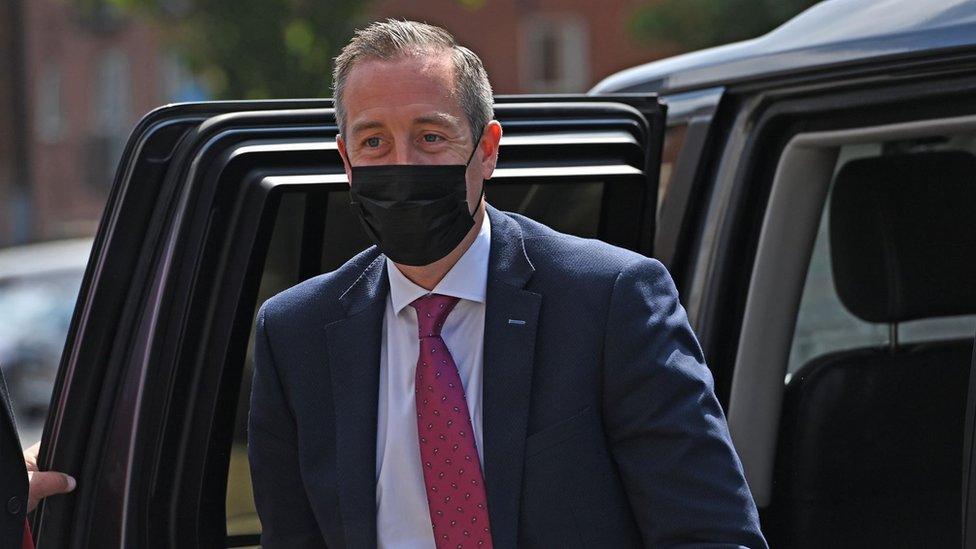Coronavirus Delta variant throwing NI a curveball
- Published

The Delta variant of the coronavirus has thrown something of a curveball at the various responses to the pandemic internationally.
Northern Ireland is no different.
The number of positive Covid cases has been rising and the Delta variant is now the dominant form of the virus in Northern Ireland.
Crucially though, hospital inpatient numbers remain relatively low; and the death rate is very low indeed - about one death every two weeks.
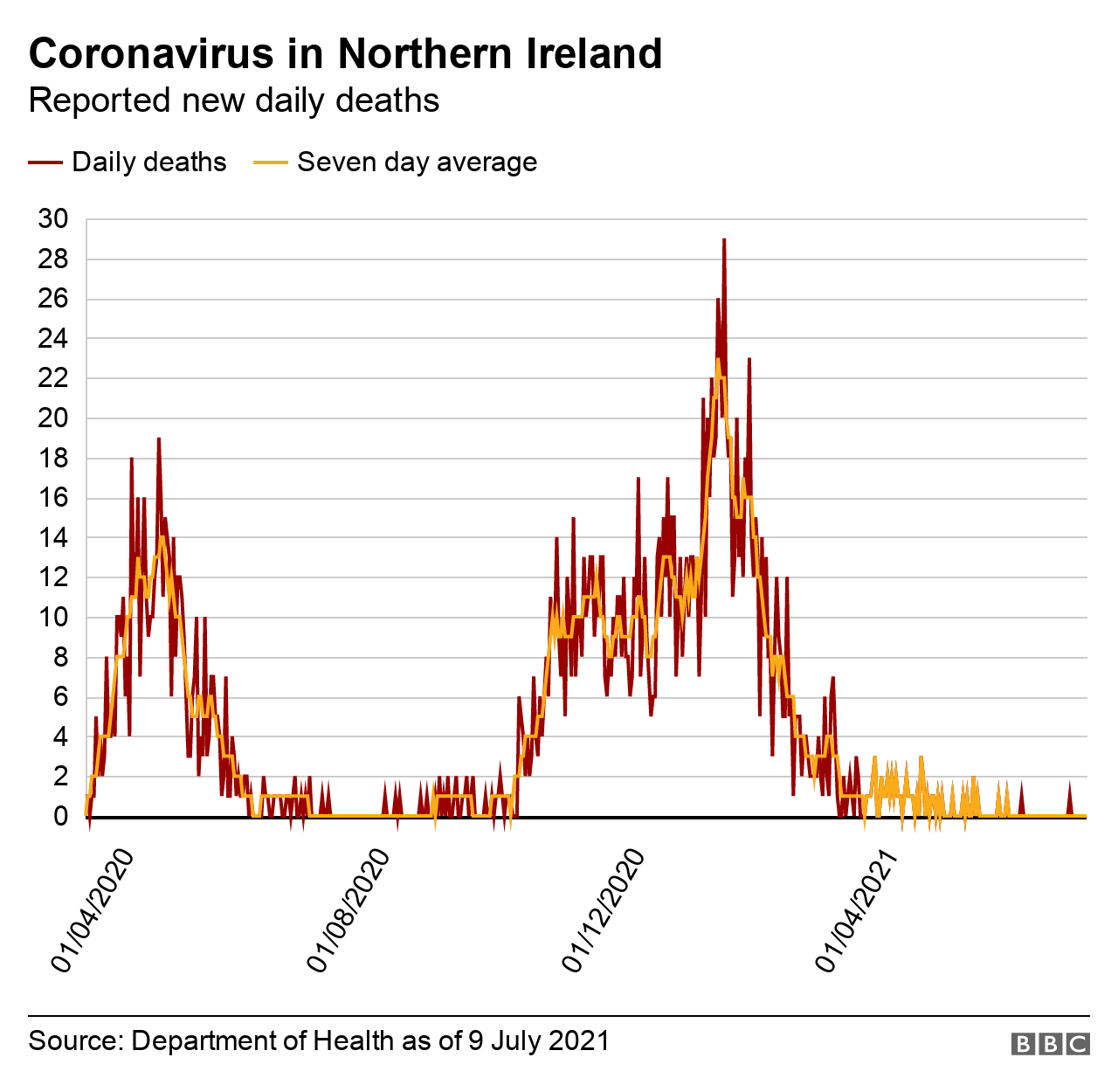
That's thanks to the vaccine.
Here's what the numbers tell us about the coronavirus in Northern Ireland.
Cases
Over the past week, about one in every 15 people tested for the virus in Northern Ireland got a positive result.
That's a positivity rate of about 6.6%.
It indicates that case numbers are on the increase - they have been for about three weeks.
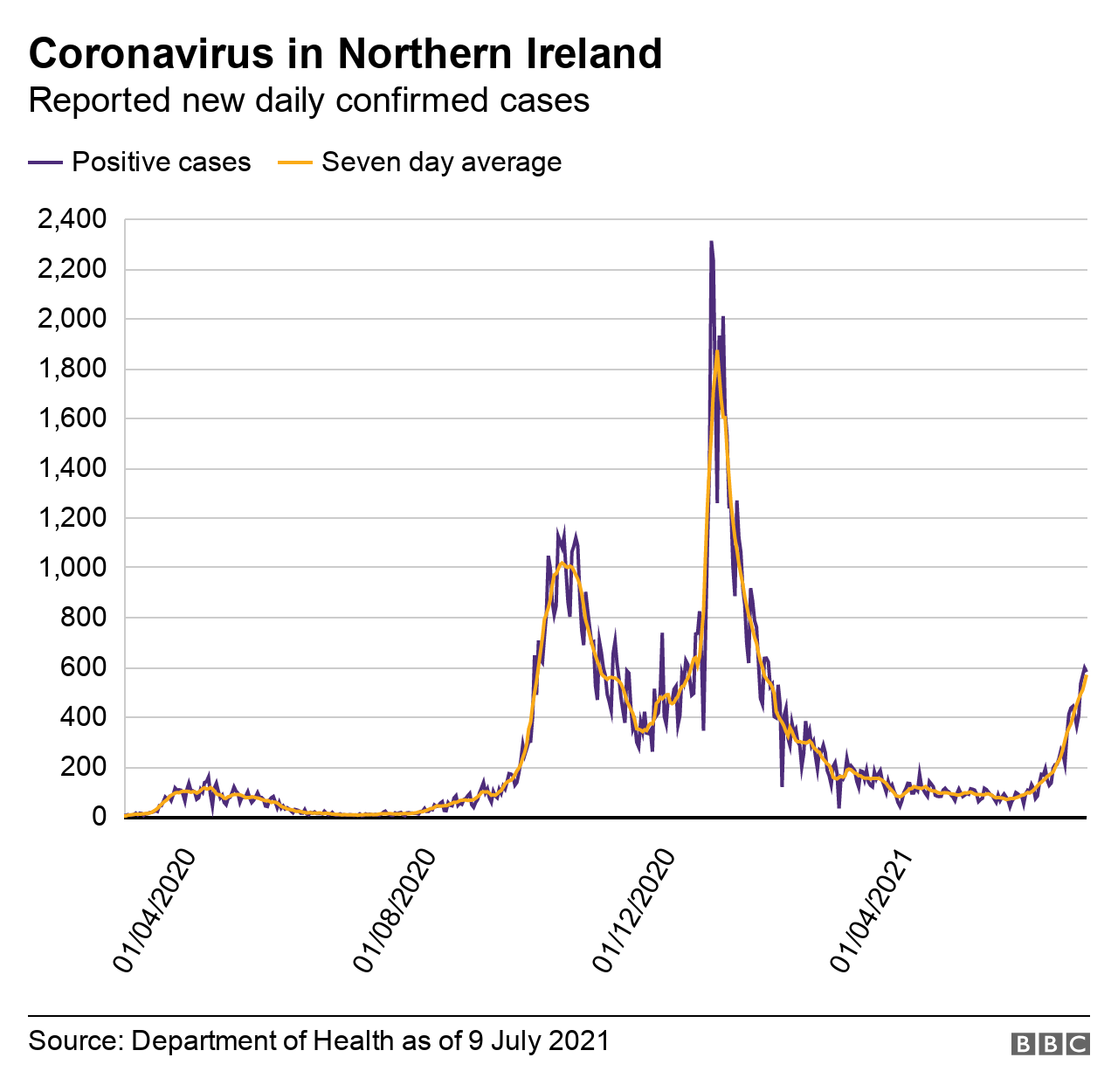
However, by comparison, Scotland and England have both had a greater increase in their caseloads.
Right now in Northern Ireland, we're seeing about 490 cases a day.
If Scotland was running at the same rate as Northern Ireland, you'd expect it to be recording about 1,200 cases.
But Scotland is reporting - on average - about 3,100 cases each day.
That is borne out by the latest infection rates published by the UK government.
The following is the infection rate per 100,000 population for the seven days up until 4 July:
UK - 277.3
England - 275.6
Scotland - 425
Wales - 131.1
Northern Ireland - 146.1
Infection rates right across the UK have been rising and are continuing to do so.
The Republic of Ireland does not publish its infection rate in the same way but it can be worked out by the figures made public.
It is 61.5.

Cases numbers in the Republic of Ireland have been increasing since about 20 June, but not at similar levels to the UK.
The council areas in Northern Ireland with the highest infection rates at the minute include Derry and Strabane, Mid Ulster and Newry, Mourne and Down.
But the rates in those areas are still a lot lower than the high rates seen in some council areas in England and Scotland.
Case comparison
The upward trend in Northern Ireland's case numbers over the past three weeks or so is roughly similar to what we saw at the start of October 2020.
But crucially there are some key differences.
Let's compare two dates which had similar caseloads - one at the start of the winter surge and one from last week.
On 1 October 2020, 481 people were reported as having tested positive. On 1 July 2021, the figure was 437.
These are arbitrary dates but similar enough for the purposes of a rough comparison.
The death rates were similar for the two dates - very low, with a rolling average of 1 for October and 0 for the July date.
There the similarity ends.
On 1 October, 18 people with the virus were admitted to hospital; on 1 July it was a third of that - just six.
Altogether there were 155 people with the virus in hospital on 1 October; 37 on 1 July.
There were nine patients in intensive care units on 1 October; two on 1 July.
What does this tell us?
It indicates that despite seeing an increase in case numbers recently that is comparable with the start of the last surge, our hospitals aren't being hit anywhere near as badly.
The main difference between October 2020 and July 2021 is the vaccine and the rollout of the vaccination programme.
It is true that we are starting to see more people in hospital with the virus.
But the numbers remain relatively small.
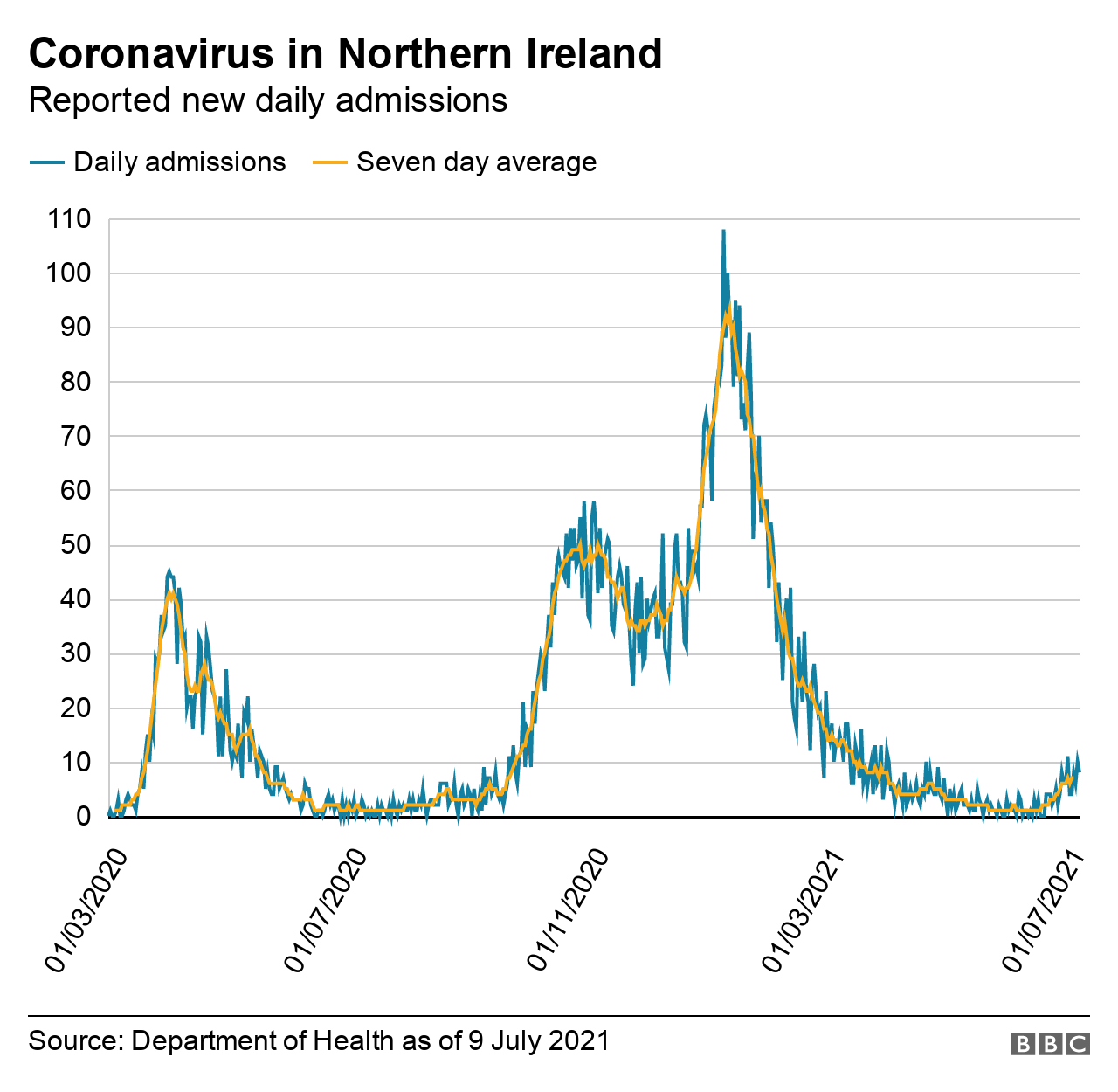
The latest figure of 60 Covid-positive inpatients represents an increase from 37 the previous week.
But it's worth bearing in mind that at one stage more than 1,000 patients in Northern Ireland's hospitals had the virus.
More telling perhaps is the type of person ending up in hospital with the virus at the minute.
Young adults (under 40) have made up about a quarter of hospital admissions lately and about 10% of inpatients overall.
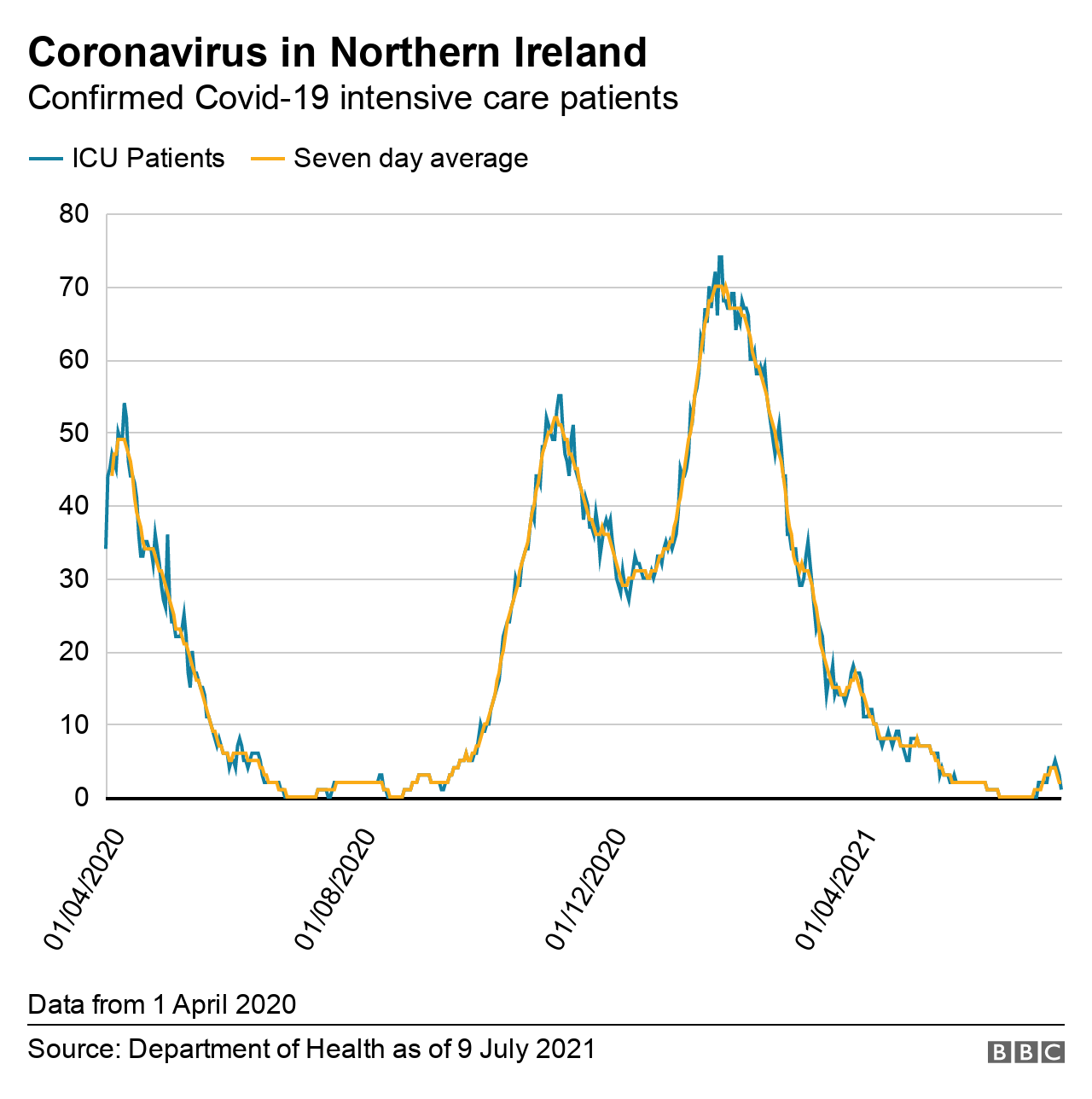
Now 10% might not sound a lot - and yes, the majority of Covid-positive inpatients are still older people - but even at the height of the winter surge only about 3% of inpatients with coronavirus were under 40.
In one way it makes sense - fewer young adults are vaccinated when compared to older adults.
What the data doesn't tell us, however, is whether those younger adults ending up in hospital with the virus were vaccinated.
Vaccinations
Without a doubt Northern Ireland's vaccination programme has been very successful.
About 81% of the adult population has had at least one jab.
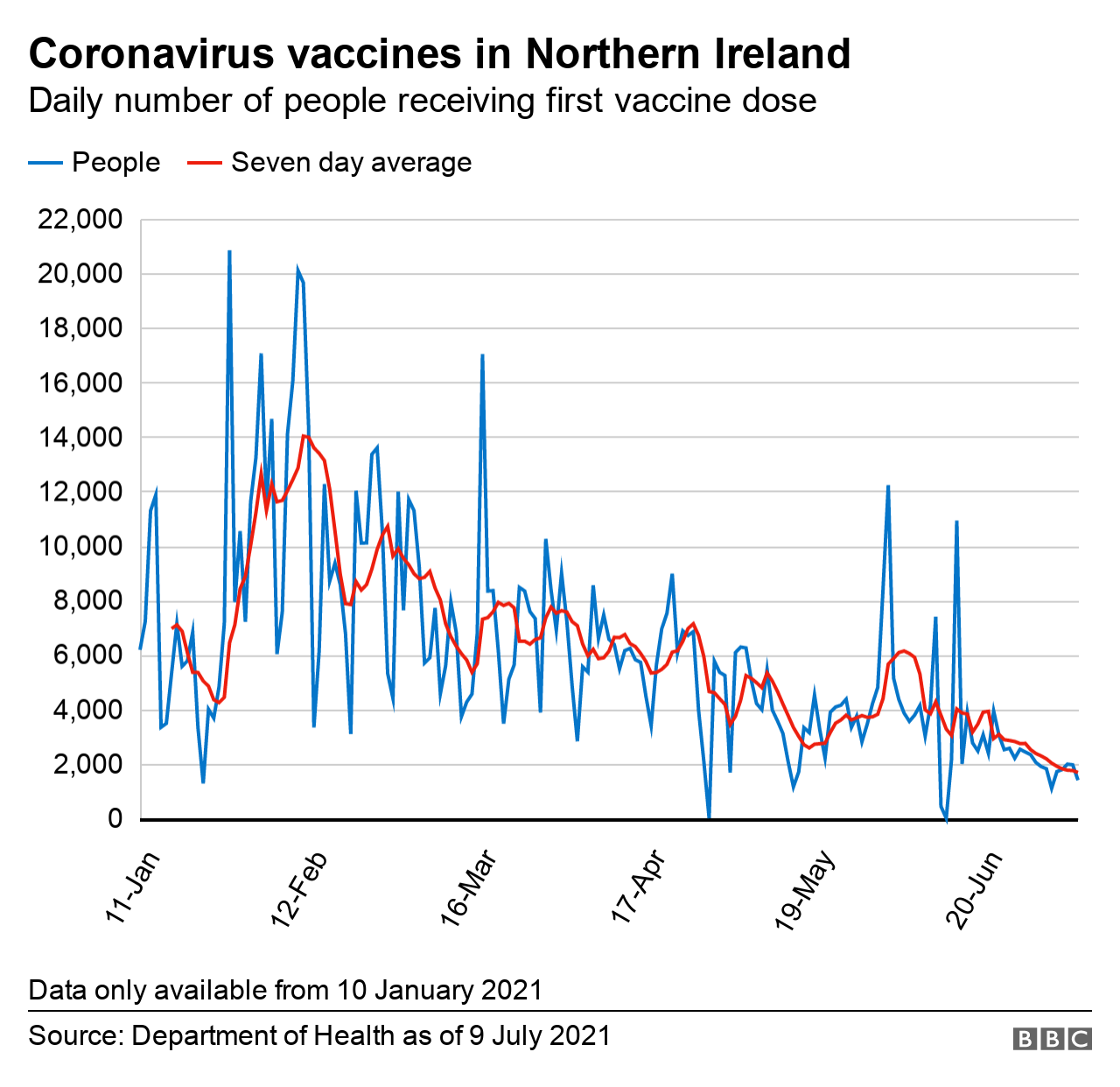
And the effects of that can be seen through the low numbers in hospitals and the low death rate.
That said, Northern Ireland has slowed in its vaccination rollout when compared with the rest of the UK.
Here are the latest figures for the percentage of the adult population to have received a first dose:
England - 86.6%
Scotland - 88.2%
Wales - 90%
Northern Ireland - 81.3%
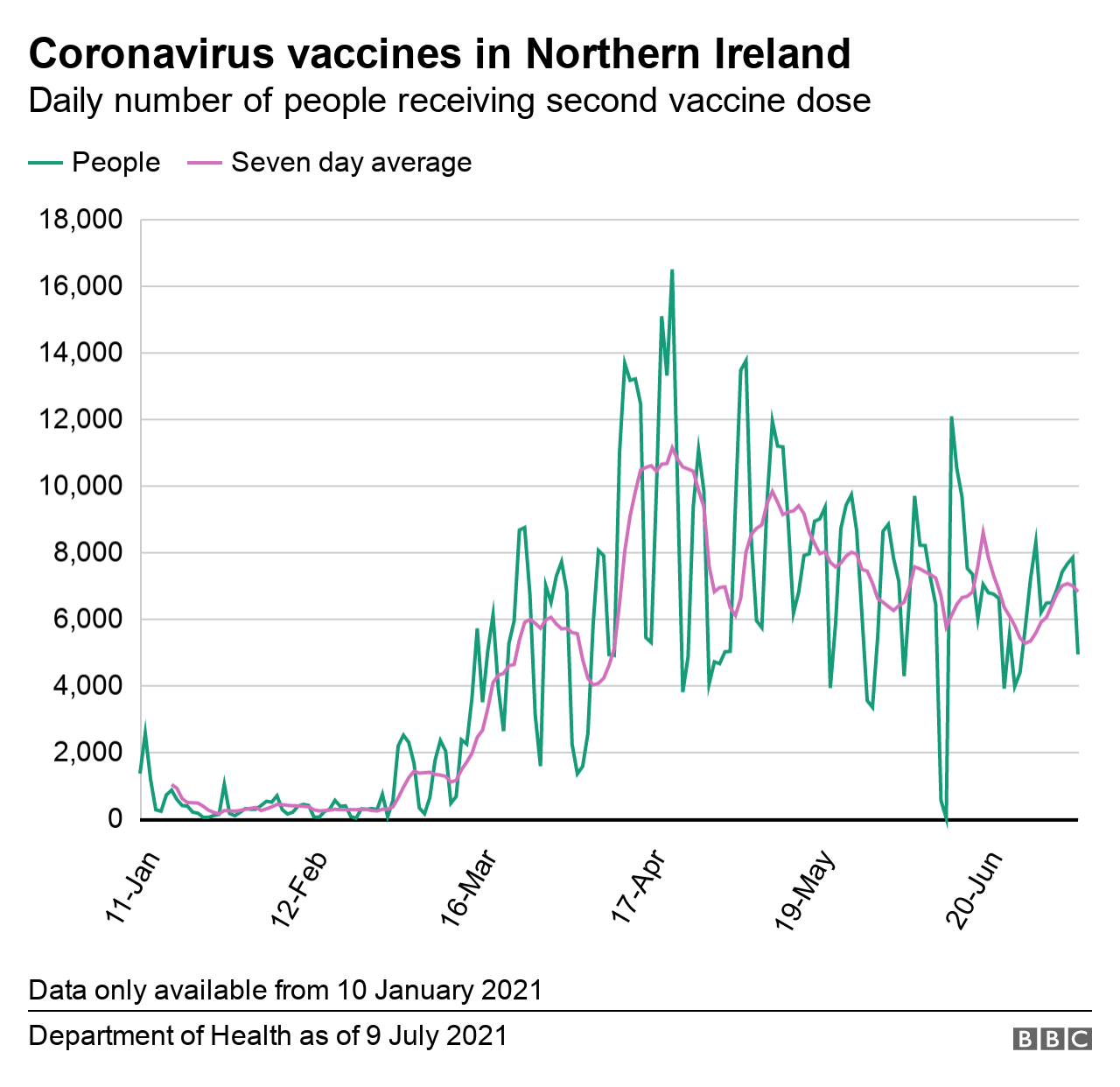
Over the past week or so, Scotland and England have been delivering first doses at roughly twice the rate of Northern Ireland.
Wales's rate over the same period has been a bit slower than Northern Ireland's but Wales has only 10% of its adult population left to vaccinate.
It stands to reason that things would get slower at that point.
The Republic of Ireland has delivered a first dose to about 70.5% of its adult population - after a sluggish start it has been catching up well with Northern Ireland.
Northern Ireland is also behind the rest of the UK in terms of second doses but the gap isn't quite so pronounced:
England - 63.4%
Scotland - 61.7%
Wales - 67.9%
Northern Ireland - 60.8%
Republic of Ireland - 52.2%
Again, the Republic of Ireland is closing the gap after a later and slower start than the UK.
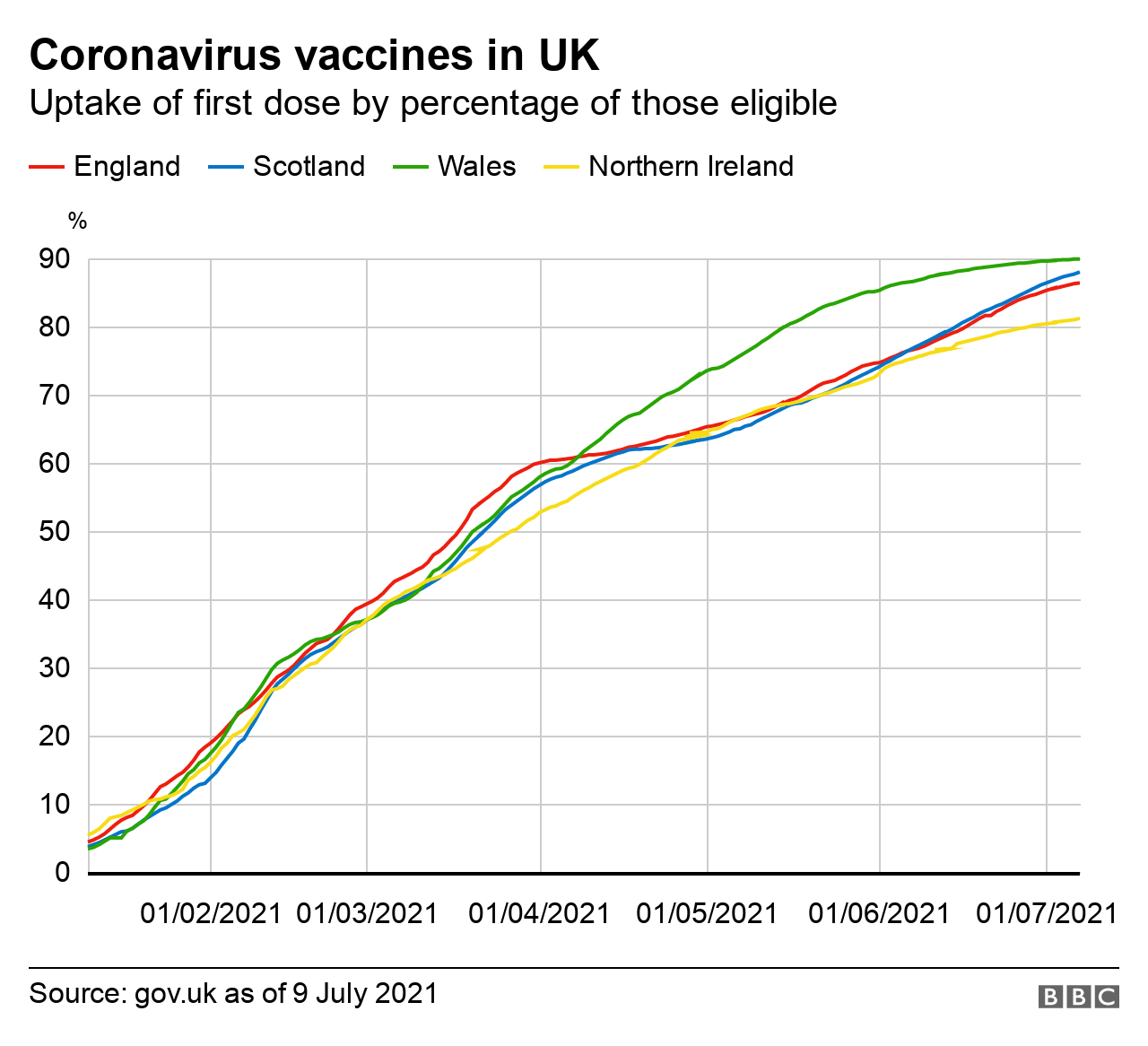
But why is Northern Ireland's vaccination programme slowing in comparison with Britain?
It's hard to say from the published data alone but we know it's not because of any lack of availability of doses.
It is also not because of a lack of effort from health officials - they've been front and centre in encouraging anyone eligible to go and get a vaccine.
It could be apathy, it could be because some people simply don't want to get a vaccine, or it could be any number of other reasons.
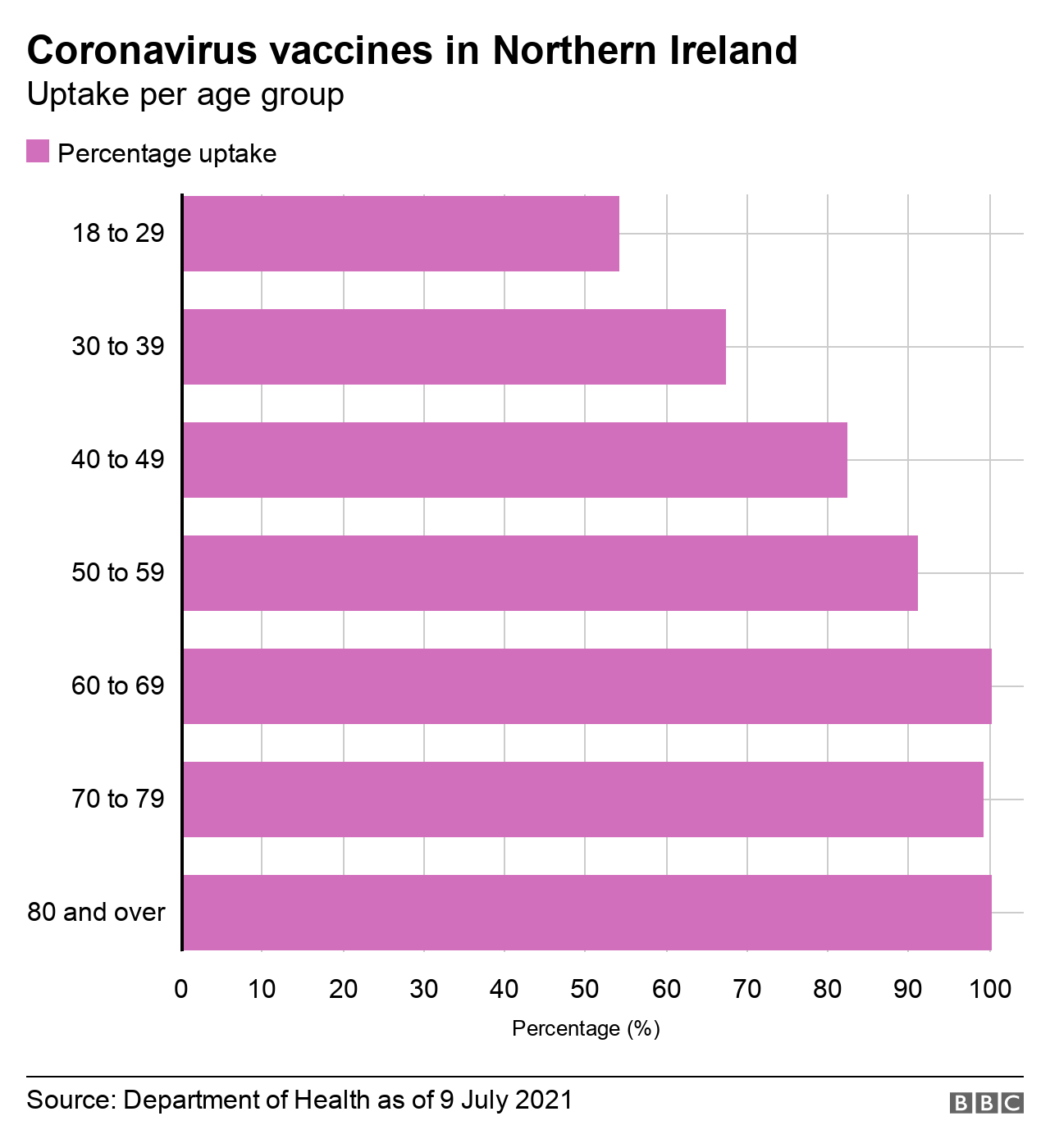
The slower uptake is certainly among adults under the age of 40 - the vaccine dashboard shows us as much.
The numbers don't lie.
Younger adults are less likely to be vaccinated but more likely to catch the virus - about 52% of all positive cases in Northern Ireland since the pandemic began have been in people under the age of 40.
Encouraging them to get the jab remains a top priority for health officials.
- Published10 July 2021
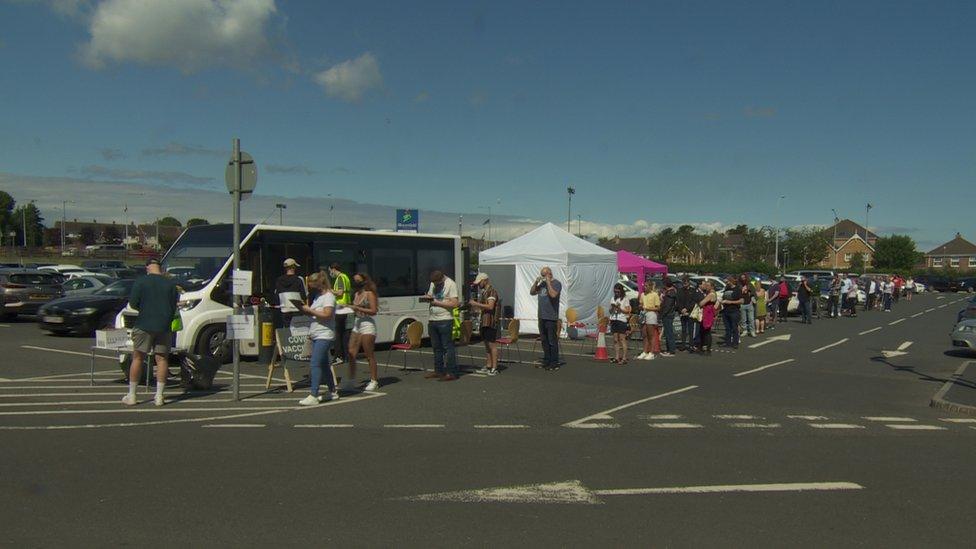
- Published9 July 2021
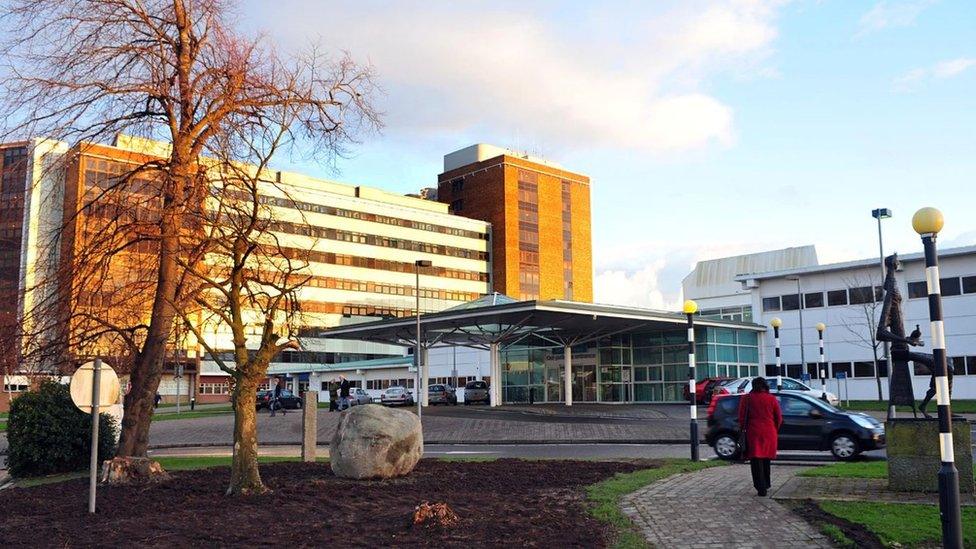
- Published9 July 2021
